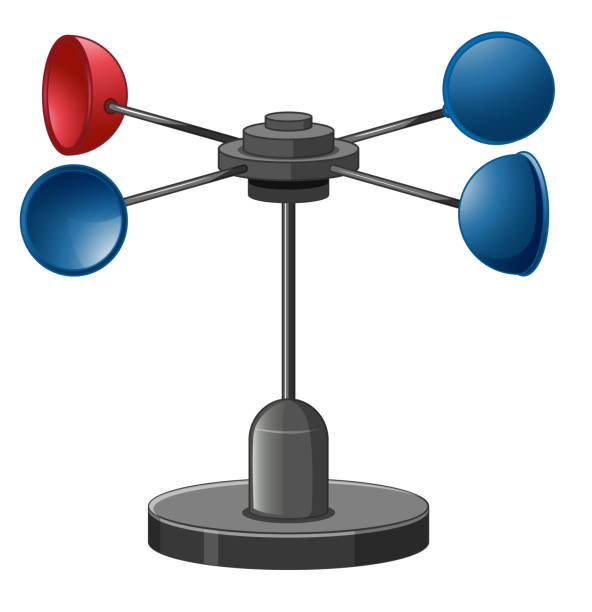Comparing Digital and Mechanical Anemometers: Which is Right for You?
Comparing Digital and Mechanical Anemometers: Which is Right for You?
Blog Article
All You Required to Find Out About Anemometers: Exactly How They Function, Why They Issue, and Where to Use Them
Anemometers, however typically neglected in the world of clinical tools, play a crucial role in different fields, offering valuable insights into wind speed and airflow patterns. As we delve right into the details of anemometer innovation, we will uncover the inner operations of these devices, their relevance, and the vital factors to consider when choosing the appropriate anemometer for certain applications.

Anemometer Fundamentals
A necessary instrument made use of to measure wind rate and direction, the anemometer plays a vital duty in meteorology and numerous markets. An anemometer generally is composed of 3 or four mugs that rotate in the wind, a vane that points into the wind, and sensors to track the turnings or movements.
There are numerous types of anemometers available, consisting of mug anemometers, vane anemometers, hot-wire anemometers, and sonic anemometers, each with its distinct functions and applications. Cup anemometers are commonly used for fundamental wind rate dimensions, while vane anemometers are liked for directional measurements.
Principles of Anemometer Operation
Structure on the foundational understanding of anemometer basics, the principles of anemometer operation illuminate the mechanics behind wind rate and instructions measurements. Mug anemometers, for circumstances, have three or even more cups that record the wind, triggering them to spin quicker as the wind rate boosts. Hot-wire anemometers rely on a heated cable that cools down as wind passes over it, with the price of cooling down figuring out the wind speed.
Value of Anemometers
Anemometers play a crucial function in measuring wind speed and instructions, supplying important data for climate forecasting, environment research studies, ecological monitoring, and air travel operations. Meteorologists rely on anemometers to gather accurate wind information, assisting them understand climate patterns, forecast storms, and issue prompt cautions to the public. Wind farm drivers use anemometers to evaluate wind conditions and make the most of electrical energy manufacturing from wind turbines.
Applications Across Various Industries
Applications of anemometers span across diverse sectors, showcasing their flexibility and utility beyond meteorology. In the renewable resource market, anemometers play an important function in assessing wind problems for wind ranch placements, guaranteeing optimum energy production. more Industries like building and mining use anemometers to monitor wind speeds, critical for safety and security procedures, particularly when operating at heights or in open-pit mines where strong winds can position risks. Anemometers are likewise indispensable in the aviation market, helping pilots in comprehending airspeed and wind direction for safe liftoffs and touchdowns. The maritime market take advantage of anemometers for ship navigating, assisting sailors prepare for climate changes and a knockout post readjust routes appropriately. In farming, anemometers assist farmers in handling crop spraying by giving real-time data on wind rate to avoid drift. Moreover, anemometers locate applications in a/c systems to enhance air flow and boost power efficiency in structures. The varied use instances of anemometers emphasize their importance across different markets, highlighting their vital duty in enhancing operational safety and security and efficiency (anemometer).

Picking the Right Anemometer for Your Demands
Selecting the ideal anemometer customized to your specific demands is crucial for getting accurate wind speed and instructions measurements. When picking an anemometer, consider factors such as the intended application, required measurement array, ecological problems, and wanted attributes. For general functions, a cup anemometer is appropriate for determining wind rate, while a vane anemometer offers wind instructions information. Hot-wire anemometers are perfect for reduced airspeed dimensions, and ultrasonic anemometers use high precision more and durability.

Final Thought
In final thought, anemometers play an essential duty in measuring wind rate and direction across numerous industries. It is essential to think about the value of anemometers in order to make informed decisions when picking the most ideal device for gauging wind conditions.
There are various types of anemometers readily available, including mug anemometers, vane anemometers, hot-wire anemometers, and sonic anemometers, each with its unique features and applications. Cup anemometers are frequently made use of for standard wind speed measurements, while vane anemometers are chosen for directional dimensions. Hot-wire anemometers are appropriate for low airspeeds, and sonic anemometers are excellent for high-precision measurements in research and industrial settings.Building on the fundamental understanding of anemometer fundamentals, the concepts of anemometer procedure illuminate the mechanics behind wind speed and direction dimensions. For basic purposes, a mug anemometer is suitable for measuring wind speed, while a vane anemometer provides wind direction data.
Report this page